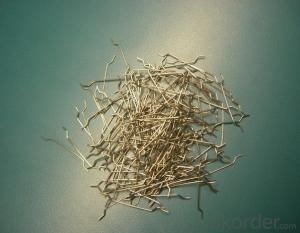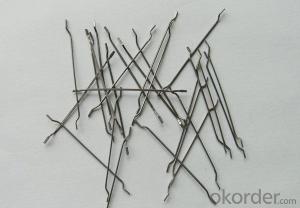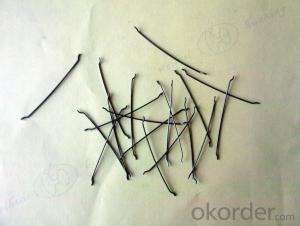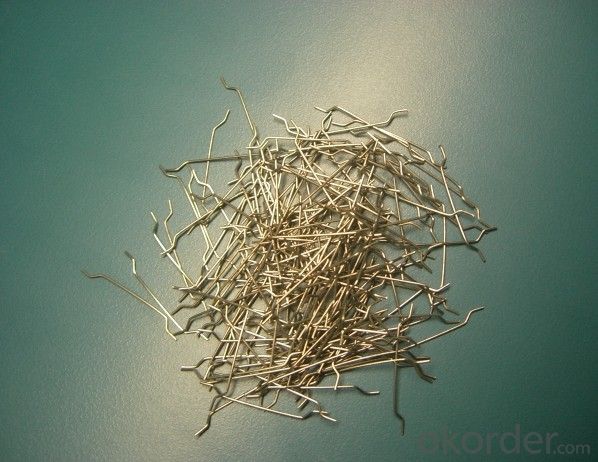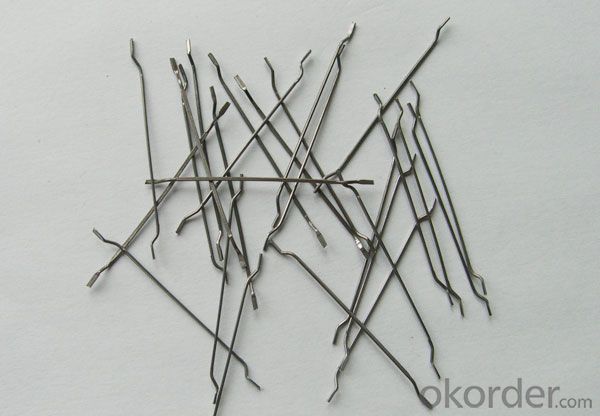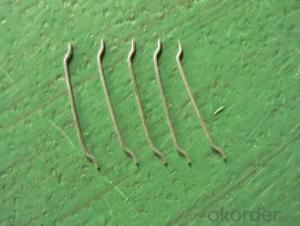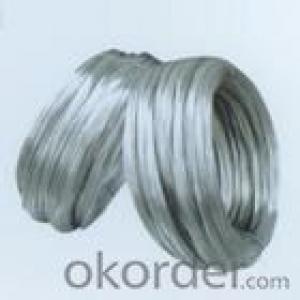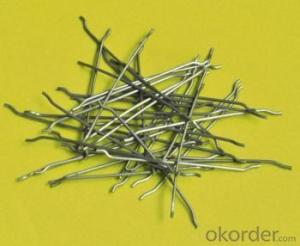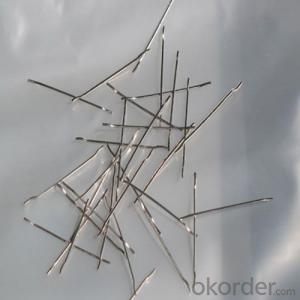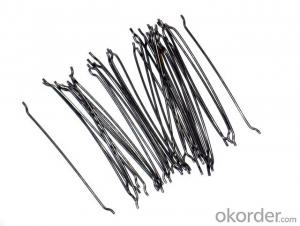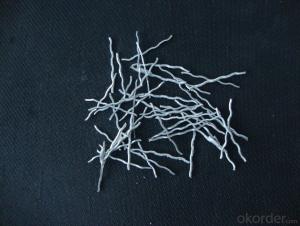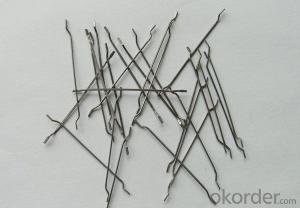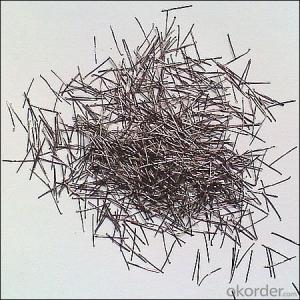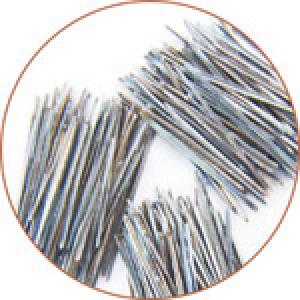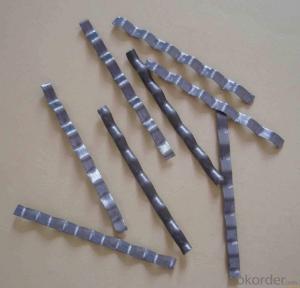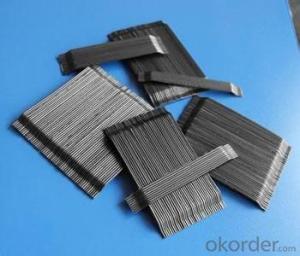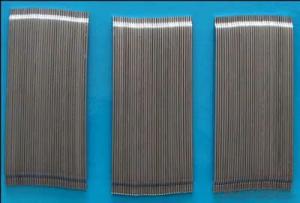Melt Extract Stainless Steel Fiber Reinforced Plastic Steam Thermal Insulating Steel Pipe
- Loading Port:
- Tianjin
- Payment Terms:
- TT OR LC
- Min Order Qty:
- 5 kg
- Supply Capability:
- 30000 kg/month
OKorder Service Pledge
OKorder Financial Service
You Might Also Like
Quick Details
Place of Origin: Jiangsu, China (Mainland)
Model Number: HT-ST
Material: Steel
Specifications
1 | Outer Diameter | 10mm-630mm |
2 | Wall Thickness | 2mm-22mm |
3 | Length | 5M-12M |
4 |
Standard | GB/T13793-1992, GB/T3091-2001, GB/T9711.1-1997, API 5L, API 5CT, EN10217, EN10219, ASTM A53 We negotiate the technology agreement about materials. |
5 |
Material | Q195-Q235, 20# , Q345(B/C) L175-L555 (A/B,X42-X80), J55, K55 N80, L80 C90,C95 P110 Q125 |
6 |
Application | Widely used in transportation of natural gas, conveyance of liquid oil and a series of gas and liquid, and also used in the fields of aerospace, energy, electronics, automobile, light industry, etc. It’s one of the most important technologies in the world. |
7 |
Packing | thermal insulation; Plastic caps can be added on both ends of pipes; Pipe are bundled into hexagonal shape with steel wires or Steel strips; adding plastic or nylon braided bag; Other ways of packing can be made according to customer’s requirements. |
8 | Day of Delivery | 15-30 days or according to the order’s quantity. |
9 | Terms of Payment | T/T |
10 | Minimum Order Quantity | 10Ton |
Picture
Steel fiber straight type
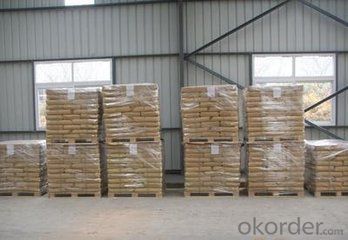
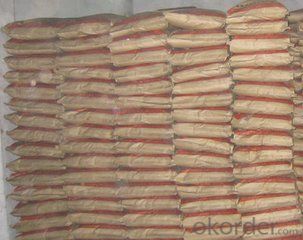
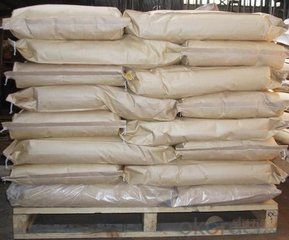
FAQ
certificated: ISO 9001
Technical advantages of Daye steel fiber:
A. Improve mechanical performance of concrete
B. Provide uniform distribution throughout concrete with excellent mixing
C. No balling or caking by adopt correct mixing method
D. Reduce concrete volume
E.Save construction time and cost
F.Reduce excavation volume
G.Available for jointless floor.
- Q: What is the effect of melt extract stainless steel fiber on the plastic settlement of concrete?
- The effect of melt extract stainless steel fiber on the plastic settlement of concrete is that it helps to reduce the settlement and improve the overall stability and durability of the concrete. The fibers are dispersed throughout the concrete mixture, providing reinforcement and improving its resistance to cracking and shrinkage. This results in less plastic settlement and a more robust concrete structure.
- Q: Can melt extract stainless steel fiber be used in retaining wall construction?
- Yes, melt extract stainless steel fiber can be used in retaining wall construction. These fibers are highly durable and have excellent tensile strength, making them ideal for reinforcing concrete structures such as retaining walls. The stainless steel fibers are typically added to the concrete mixture during the mixing process, providing reinforcement throughout the entire structure. This helps to increase the overall strength and durability of the retaining wall, making it more resistant to cracking and shifting. Additionally, the corrosion resistance of stainless steel fibers ensures that the retaining wall will maintain its structural integrity over time, even in harsh environmental conditions. Overall, using melt extract stainless steel fiber in retaining wall construction is a reliable and effective method for enhancing the strength and durability of the structure.
- Q: Does melt extract stainless steel fiber improve the freeze-thaw resistance of concrete?
- Yes, melt extract stainless steel fiber does improve the freeze-thaw resistance of concrete.
- Q: Can melt extract stainless steel fiber be used in architectural precast elements?
- Yes, melt extract stainless steel fibers can be used in architectural precast elements. These fibers are commonly added to concrete mixes to improve the strength, durability, and performance of the precast elements. The stainless steel fibers are typically added in small percentages by volume to the concrete mix during the batching process. They help to enhance the flexural strength, impact resistance, and crack resistance of the precast elements. Additionally, the stainless steel fibers also provide corrosion resistance, which is particularly beneficial in architectural precast elements that may be exposed to harsh environmental conditions or corrosive chemicals. Overall, the use of melt extract stainless steel fibers in architectural precast elements can result in higher quality and longer-lasting structures.
- Q: What is the effect of melt extract stainless steel fiber on the modulus of resilience of concrete?
- Adding melt extract stainless steel fibers to concrete mixtures has a generally positive effect on the modulus of resilience of the concrete. These fibers are commonly used to enhance the durability and mechanical properties of concrete. The modulus of resilience is a measure of a material's ability to absorb and store energy when it is deformed elastically, and then release that energy when the load is removed. The addition of melt extract stainless steel fibers improves the modulus of resilience of concrete by increasing its ductility and toughness. These fibers act as reinforcements within the concrete matrix, forming a network that helps distribute stress and prevent the propagation of cracks. This reinforcement effect enhances the concrete's ability to withstand impact, cyclic loading, and other external forces, ultimately increasing its resilience. Furthermore, stainless steel fibers have high tensile strength and corrosion resistance, which further contribute to the improvement of the concrete's modulus of resilience. These fibers effectively prevent the formation and expansion of cracks, thereby enhancing the overall structural integrity and longevity of the concrete. To summarize, the inclusion of melt extract stainless steel fibers in concrete has a positive impact on its modulus of resilience. This is achieved by increasing the concrete's ductility, toughness, and ability to absorb and release energy. As a result, the concrete becomes more durable and resilient, capable of withstanding various types of loading and environmental conditions.
- Q: How does melt extract stainless steel fiber affect the crack width of concrete?
- Melt extract stainless steel fiber can effectively reduce the crack width in concrete. When added to the concrete mix, the fibers disperse throughout the matrix, creating a three-dimensional reinforcement system. As the concrete sets and hardens, the fibers provide additional tensile strength, preventing cracks from propagating and widening. The fibers act as tiny reinforcement bars, bridging the cracks and distributing the stress across a larger area, thereby limiting crack width. Consequently, the incorporation of melt extract stainless steel fibers in concrete significantly improves its durability and structural integrity.
- Q: How does melt extract stainless steel fiber contribute to the post-cracking behavior of concrete?
- Melt extract stainless steel fiber plays a crucial role in enhancing the post-cracking behavior of concrete. When incorporated into the concrete mix, these fibers create a three-dimensional network within the matrix, providing a higher level of reinforcement and increasing the overall tensile strength of the material. During the early stages of cracking in concrete, the fibers help to distribute the load and limit crack propagation. By bridging across the cracks, they prevent further widening and maintain the structural integrity of the concrete. This is especially important in situations where the concrete is subjected to dynamic or cyclic loading, as it prevents the cracks from propagating and causing catastrophic failure. Moreover, the addition of melt extract stainless steel fibers significantly improves the ductility and toughness of the concrete. This means that even after the concrete has cracked, it can still withstand higher levels of deformation and absorb more energy before failure occurs. This enhanced post-cracking behavior allows the concrete to maintain its load-carrying capacity and structural performance, even under severe conditions. Furthermore, the stainless steel fibers also contribute to reducing the risk of shrinkage cracks in concrete. By restraining the shrinkage-induced tensile stresses, these fibers help to minimize the formation and propagation of cracks during the curing and drying process. This is particularly beneficial in large concrete structures or in environments with varying temperature and moisture conditions. In summary, melt extract stainless steel fiber greatly enhances the post-cracking behavior of concrete by providing increased tensile strength, crack bridging capability, improved ductility, and reduced shrinkage cracking. Its inclusion in concrete mixes ensures that the material can withstand higher levels of loading, maintain its structural integrity, and exhibit superior performance, even after cracking has occurred.
- Q: Can melt extract stainless steel fiber be used in water treatment plants?
- Indeed, the utilization of melt extract stainless steel fiber proves advantageous in water treatment plants. Renowned for their outstanding resistance to corrosion, durability, and strength, stainless steel fibers are suitable for a wide range of applications within such facilities. By integrating these fibers into the construction of filter media, such as filter bags or cartridges, the filtration process can be enhanced, ultimately resulting in improved water quality. Furthermore, the incorporation of stainless steel fibers into concrete or other building materials guarantees the longevity and reliability of the structures employed in water treatment plants. Consequently, the employment of melt extract stainless steel fiber in these facilities contributes significantly to the efficiency and effectiveness of the water purification processes.
- Q: What is the effect of melt extract stainless steel fiber on the thermal conductivity of concrete?
- The thermal conductivity of concrete can be greatly improved by incorporating melt extract stainless steel fiber. Stainless steel fibers possess excellent thermal conductivity properties, enabling them to effectively transfer heat throughout the concrete. When these fibers are added to the concrete mixture, they create a three-dimensional network that aids in the efficient conduction and distribution of heat. This enhanced thermal conductivity has multiple positive impacts on the performance of the concrete. To begin with, the heightened thermal conductivity can enhance the overall thermal efficiency of structures constructed with this particular type of concrete. It facilitates better heat transfer, leading to more efficient temperature regulation and reducing the need for additional insulation or heating and cooling systems. Furthermore, the improved thermal conductivity can also enhance the durability of the concrete. By evenly distributing heat and minimizing temperature variations, the risk of thermal cracking and damage due to expansion and contraction is diminished. This is particularly advantageous in environments with substantial temperature fluctuations. Moreover, the greater thermal conductivity provided by melt extract stainless steel fiber can also be beneficial in applications like radiant floor heating systems. The fibers effectively transfer heat from the heating elements to the surface, resulting in more efficient and effective heating. In conclusion, the incorporation of melt extract stainless steel fiber in concrete significantly improves its thermal conductivity. This improvement leads to increased thermal efficiency, enhanced durability, and improved performance in various applications where heat transfer is crucial.
- Q: How does melt extract stainless steel fiber improve the resistance to aging in asphalt mixtures?
- The resistance to aging in asphalt mixtures is improved by melt extract stainless steel fiber in various ways. Firstly, the overall strength and durability of the asphalt mixture are enhanced by adding stainless steel fiber. This increased strength enables the pavement to withstand repetitive loads and traffic stresses, reducing the likelihood of premature cracking, rutting, or other forms of distress. Moreover, stainless steel fiber acts as a reinforcement within the asphalt matrix, preventing crack propagation and reducing aging-related damage. These fibers create a three-dimensional network that distributes stress more evenly throughout the mixture, minimizing stress concentration at specific points and increasing resistance to deformation. Additionally, the presence of stainless steel fiber improves resistance to temperature variations in asphalt mixtures. It helps mitigate the effects of thermal expansion and contraction, reducing the risk of thermal cracking and enhancing long-term pavement performance. Furthermore, stainless steel fiber exhibits excellent corrosion resistance properties. This means that even in harsh environmental conditions, such as moisture or exposure to deicing salts, the fibers will not corrode or degrade over time. This corrosion resistance greatly contributes to improved aging resistance, as it ensures the reinforcing effect of the fibers remains intact throughout the lifespan of the asphalt pavement. In conclusion, melt extract stainless steel fiber enhances resistance to aging in asphalt mixtures by improving overall strength and durability, preventing crack propagation, reducing deformation, mitigating thermal cracking, and providing excellent corrosion resistance. These advantages result in a longer lifespan and improved performance of the asphalt pavement, ultimately saving costs and enhancing the safety and comfort of road users.
Send your message to us
Melt Extract Stainless Steel Fiber Reinforced Plastic Steam Thermal Insulating Steel Pipe
- Loading Port:
- Tianjin
- Payment Terms:
- TT OR LC
- Min Order Qty:
- 5 kg
- Supply Capability:
- 30000 kg/month
OKorder Service Pledge
OKorder Financial Service
Similar products
Hot products
Hot Searches
Related keywords
